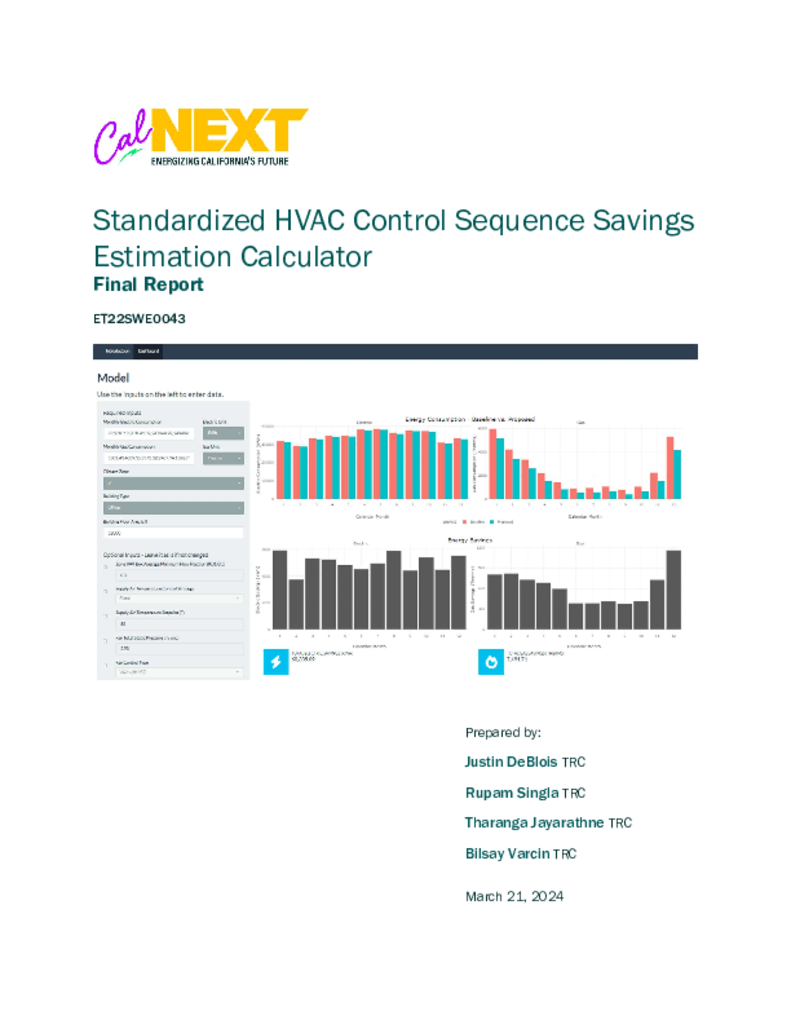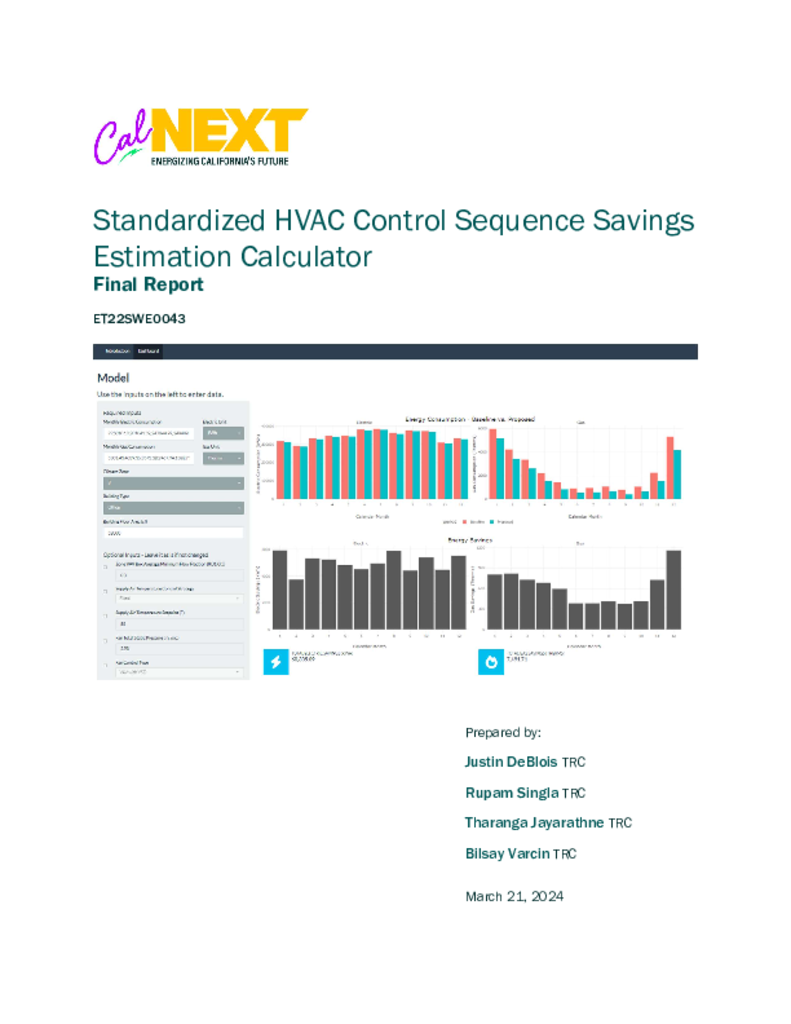ET22SWE0043 - Standardized HVAC Sequence of Operations Savings Calculator
One of the greatest underutilized opportunities for energy savings in buildings through retrofits and retro-commissioning is optimized HVAC system sequence of operations (SOO). A recent EPIC Best In Class research project funded by the California Energy Commission showed that implementation of standardized SOO in building automation systems (BAS) represents significant, cost-effective energy savings opportunities compared to typical practice and ensures long-term optimized performance and persistence of energy savings (California Energy Commission. 2021). Field implementation results in six nonresidential building types yielded 12-60 % HVAC energy savings.
Standardized and optimized control sequences for HVAC systems have been developed and published by ASHRAE (ASHRAE 2021). Field validation of these control sequences in new construction and during major control upgrades confirms that significant and cost-effective energy savings outcomes are possible compared to typical practice (California Energy Commission. 2021). However, this work also revealed a variety of compatibility barriers when applied to existing control system hardware and the SOO have not been validated across a full range of physical conditions and building types.
Utility program services and incentives play a crucial part in driving the market adoption of standardized HVAC SOO. While today a standardized HVAC SOO retrofit may be able to receive an incentive under a custom program, prescriptive programs are easier for the implementer (and the applicant) because savings algorithms and data inputs are pre-approved and the process is streamlined. Before an energy conservation measure can be introduced to a prescriptive incentive program, the baseline assumptions, calculation methodology, equipment useful life, incremental costs, and other measure attributes must be well established and typically published in a Technical Reference Manual (TRM) or technology workpaper. These protocols then serve as the basis for many aspects of program design, including the establishment of program eligibility criteria, incentive levels, measure cost-effectiveness pre-screening, and program reporting, among others. This process ensures that prescriptive programs are aligned with the requirements set by state regulators, and they utilize a set of pre-approved, standardized measurement and verification (M&V) approaches for claiming savings.
Retrofitting existing HVAC system controls to a standardized SOO has great potential for energy savings in buildings. However, it is difficult and therefore costly to accurately estimate the energy savings of the control retrofits. Therefore, energy savings and an incentive-estimating tool is needed that can quickly assess the value of a potential retrofit before embarking on project design will reduce barriers to identifying promising retrofit sites.
This project will establish energy savings estimates through simulation of a standardized HVAC SOO covering a variety of existing conditions in a variety of building types in California. First, we will use simulations to determine the control optimization measures with the most potential impact on energy savings. Second, we will develop an energy savings calculator to estimate energy savings using site-specific conditions and parameters. Third, we will develop supporting materials required for the development of a TRM/workpaper.
California Energy Commission. 2021. Electric Program Investment Charge (EPIC) Best-in-Class. EPIC/CEC Best in ClassProject Brief
ASHRAE 2021. GUIDELINE 36-2021 -- High-Performance Sequences of Operation for HVAC System. Atlanta. ASHRAEGuideline 36
The project team developed the calculator based on stakeholder outreach, which identified the absence of an offering in efficiency programs that is flexible enough to account for building and system characteristics but simpler than a custom energy modeling approach. The team did extensive testing of energy modeling parameters to determine the 13 parameters with the greatest impact on measure performance. Based on feedback from stakeholders, most of the inputs are optional, allowing for greater accessibility and ease of use. The calculator includes an uncertainty analysis that accounts for the added uncertainty from unknown building parameters and returns a dynamically calculated uncertainty range.


